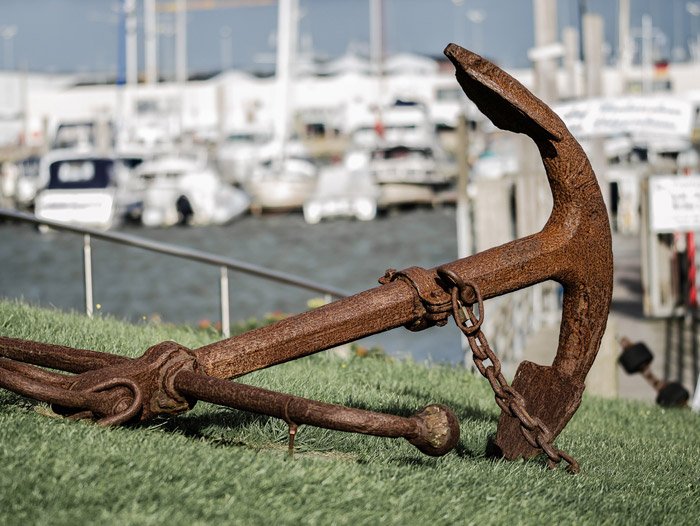Senior Nomad Budget Travel
Easy, Safe, Fun!Senior Nomad Routes

Developing your own set of senior nomad routes will make your roving retirement lifestyle travel much more effective and cheaper. It will also get much easier as you travel more and more, since you’ll now have favorites to later return to.
However, before you can map your routes, you must first have your list of locations to visit and an understanding of travel styles and rhythm, discussed in previous articles.
Creating a route is simply planning out your trip in an efficient manner, with enough time to travel at your preferred pace. This is a rather visual process, so I think it works best when working with a world map.
Mark locations
First, mark your home-base locations on your map. If you don’t have any yet, then just mark a couple places you feel have the highest probability of becoming a new home-base for you. Then add in some cities you have in mind for surveyor mode. And lastly, mark cities that are really high tourist value for you. Those “someday I’m going to take a trip to” places.
Mark these different types of places in different colors if you’re using paper. Or make a personal google map and change the push-pin color.
If you have any friends or relatives living overseas, mark those cities as well. They do not have to be willing to be your hosts. Just people you know enough that you’d be comfortable with going out for a coffee or perhaps lunch. If they’re in a city you’d like to visit anyway, knowing someone there you can talk to will make your visit much easier. Someone to ask those basic questions like how to ride the bus, where to shop, good places to eat, the best neighborhoods to stay in (and which to avoid).
Spot clusters
I’m sure you realize by now that you’re looking for clusters. At least one location you can use for a longer term resting spot, one or two surveyor mode cities and a couple tourist spots. These of course can be in any combination and one city could have more than one function for you.
I suggest starting with just one single cluster. Then think about how much time you’d need to visit all these places. If this is your first retired nomad style exploration start with two months or less. Also pick a cluster that will be relatively easy to fly in and out of from where you live now. That will keep your airfare costs to a minimum.
Finally, keep in mind your travel rhythm as we discussed previously. You’ll need to allow enough time for rest and relaxation on your roving retirement journeys.

Questions that will help
- Can you see a somewhat natural route between the cities in your cluster?
- Can you fly into one city, make a loop, and then fly home from where you started?
- Or do the cities form more of a line? Could you fly open-jaws? Into one city, travel your route, and then out the other end back home?
- Which city is your rest and relax city? Put it somewhere in the middle of your trip if you can. That’s when you’re more likely to need a break from the busier pace of your other cities.
- Or perhaps a starburst pattern or tiny loops would work better. Especially if your resting city is a larger one you want to fly in/out of. In this case, fly into your bigger city and do a bit of tourist / surveyor exploration. Head out on one of your loops and return back to the big city for rest and relaxation. Then head out on another loop, returning back in time to catch your flight home.
- How far apart are the cities in your route? Use google maps to find out driving time and distance. Then add 50% or even double it if you’re going to take a bus. If trains are available, that’s often another cost effective choice. And if you’re really lucky, the country you’re visiting has one or more budget airlines. These are great since you can get a really fast and cheap hop. (I’ll be writing specifically about this type of short traveling in a later post.)
- Is there an outlier city that seems off the main route and a lot of work to get to/from? Can you live with eliminating it for now and save it for another trip?
- Is there a long stretch that you could break up with a couple nights stay somewhere else interesting that wasn’t on your initial list? Perhaps to break up an 8-hour bus ride into two 4-hour easier hops?
Make your travel plan
At this point you probably can see a tentative route emerging. Don’t rush. I often need to go back and do more location research at this point. Or sometimes just sleep-on-it a few days and give my busy brain a rest.
When you’ve got a tentative route, add up the days and nights you’re considering for each location, in order of how you think you’ll go. If it’s only a short hop (3 hours or less) between spots, I don’t usually count it extra. But for more than that, experience has taught me to add in an extra travel-only day. (Buses can break down, airlines have labor disputes, etc.)
Now mentally review your nomad travel plan and see how it feels. Does it have a good rest/activity rhythm? Is it overall a good length you can handle? What’s the best time of year to do this route? Are you still far enough in the future to still take advantage of cheaper airfare and be able to snag the best accommodations?
Maybe pad in an extra day here and there. Even if it’s a sight-seeing tourist city, you’re not probably going to enjoy dawn to dusk activity each and every day. Give yourself some mini-rests.
Personally, I start my planning about 3 months in advance. And even once I feel really good about my plan I don’t set my entire route in stone. I love having flexibility and options. Just in case I want to stay longer in a place I really like, or leave sooner if I didn’t like it much.

Set your anchor points
I know some nomads like to travel completely open ended. They just set off in a direction and go. They really don’t know how long they might stay somewhere, or where they might go next. Wherever the wind blows or the spirit takes them.
Personally, I like a bit more structure. It comforts me if I at least know the big pieces are in place and where I’m going to sleep tonight. But I also really dislike trips that are planned to the nth degree with zero flexibility. Since my preferred style is somewhere in between, I’ll just describe what I do. You can then decide where your comfort level is on that spectrum and plan accordingly.
My anchor points are my long distance airfares and my larger blocks of rest time. Once they are in place, I don’t change them. Here’s why…
- Airfare is non-refundable if you get the budget tickets (which is my personal price range). I actually get a bit queasy and have to take a big breath before hitting that “purchase now” button.
- If you’re looking for a 2 to 4 week block of rest time lodging, your options are fewer. Plus they quickly get broken up by other people making their holiday plans. For example, I often find nice budget places offering a studio apartment, or a sweet room with private bath, balcony and shared kitchen. But they usually have only a couple of such style rooms. The remainder are their standard rooms. So if I am far enough in advance, I can reserve the whole block of time I want. But if someone else books it for just a weekend right in the middle of the time I want, then I’m out of luck. I’ll end up with only standard hotel rooms or cheap hostels as options. Neither of which I am interested in.
Flexible in-between
Once I’m anchored in, I play with the in-between locations of my trip. I may go ahead and make some lodging reservations based on my plan outline, but only if they are fully refundable and no prepayment required. That way I’ve got the best bang-for-my-buck lodging locked in, but I’ve still got the freedom to completely change my mind. (Hint: If there is a cancel-by date for the refundable part, make a note of it!)
Or I may not book anything at all. It’s a lot easier to find the type of accommodations you like (and per your budget) if you’re only wanting a few days or a single week.
This method has served me well. A while back I was on a meticulously planned trip with well over a month of hotels pre-booked, anywhere from 2 to 7 nights each. Part way through my trip I had a back spasm and could hardly move. I knew I needed an immediate rest stop, for a minimum of one month. And since I had kept my flexibility with only fully refundable lodging, I was able to cancel everything at zero cost. I quickly found a wonderful month long place in Boquete, Panama. I had originally planned a week there, but I am now grateful I had the extra time.

Repeat and expand routes
Once you’ve done this a few times you will find more and more mini home-bases that you truly love. Others will drop away. Seasonal routes will start to show themselves. Especially when you start to think of a whole country or entire region as one of your bases. You then can regularly travel there for more surveyor trips in sub-regions, ferreting out more favorite spots. And of course with enough new sight-seeing sprinkled in here and there.
Once you’ve been to a particular country or city, your return visit is much easier and more relaxing. you already know all the everyday details (like grocery shopping or taking the bus) that were mystifying the first time. It’s now comforting to go there instead of stressful.
Plus have multiple bases and routes give you easy jumping off points for more locations farther afield. For me for example, for decades I’ve wanted to see Machu Picchu in Peru, but it always seemed way too daunting to go there. But now I have developed a solid base in Colombia where I do the majority of my resting time. Plus I have a mini-base in Cuenca, Ecuador that feels very comfy. Given that, Peru is now an easy hop-skip-and-jump which I’m sure I’ll visit soon. And of course, when I’m in Peru, I’ll be on the lookout for more places to add to my favorites list.
Travel like a plant?
I used to think of my senior nomad travel lifestyle as being somewhat akin to migratory animal. Like birds or wildebeests traveling their routes. But those are all done in huge groups and there’s a fixed back and forth route they always follow.
Now I think a spider plant is a much better analogy for what I do. I’m not part of a group, I’m just one single plant that actually does start from somewhere. My travels are my exploratory tendrils going out in multiple directions. When I find what nourishes me, I start growing additional roots in that new spot. And the more times I go back there, the deeper and stronger those new roots become. Eventually, that offshoot is big enough to start sending out tendrils of it’s own.
Constantly exploring, ever growing, yet always still connected. That’s the point of senior nomad routes.
